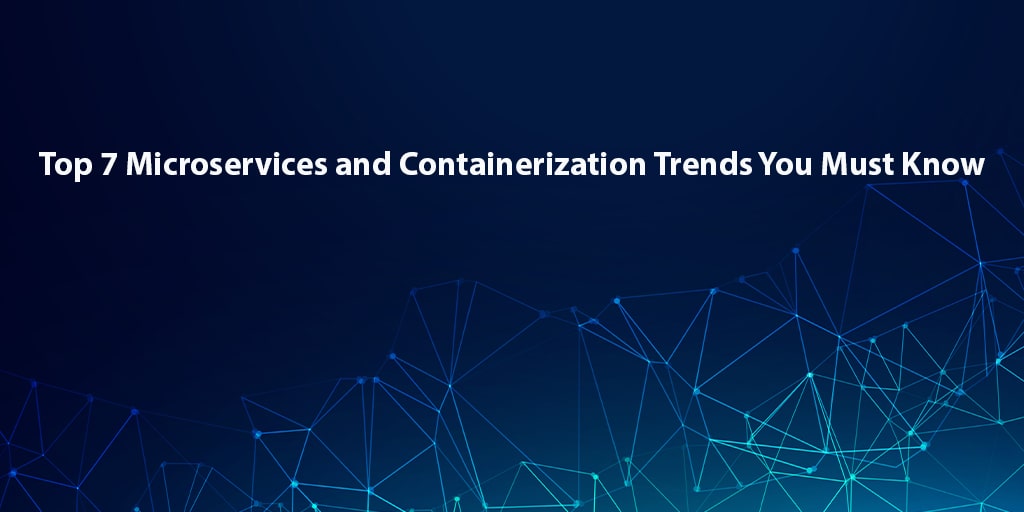Microservices is a term used for the concept of breaking down applications into smaller components that work together. With this break-down, the application becomes easier to build and maintain as each component is then independently developed and separately maintained. Microservices offer the benefits of developer independence, isolation, scalability, and lifecycle automation to applications.
Containerization is a technology that offers a logical packaging mechanism where applications can be abstracted or separated from the environment in which they actually run, making it easier to host applications inside portable environments.
By this abstraction or decoupling, containerization helps developers focus on their application logic and dependencies and leave the deployment and management on the IT operations team.
Using containers for microservices offer enormous advantages to include reduced size, cost reduction, more developer independence, enhanced efficiency, flexible storage, scalability, better isolation, and quicker execution.
Top Microservices and Containerization Trends
Microservices and containers have gained immense popularity in recent years. There are many emerging technologies and tools that support microservices and containerization, to provide a better development experience.
So, let’s see the most popular trends in microservices and containerization that can reshape the app development industry!
1. Kubernetes
Kubernetes or k8s is an open-source, portable system or Container-As-A-Service platform that manages containerized services to include automating application deployment, scaling, and management.
If one container running the application goes down, another needs to start immediately to prevent downtime. Kubernetes manages this task for us by restarting the failed containers, killing the failed containers, and replacing them as needed. Kubernetes helps in stable deployment by providing load balancing and network traffic distribution when the traffic is very high.
Besides, Kubernetes allows you to mount the storage system of your choice automatically and provides automated rollouts and rollbacks. Due to its numerous benefits, Kubernetes has revolutionized the container services and has become the top and most popular containerization trend.
2. Artificial Intelligence Operations
AIOps or Artificial Intelligence Operations is the use of ML and AI to develop tools meant to automate the work done by IT Ops teams. This can apply to solving complex system failure issues to automating the process of identifying security breach and its correction by utilizing data and patterns.
With the use of cloud and distributed containerization, the data to be handled by IT Ops teams is increasing rapidly. Thus, AIOPs are the need of the hour.
AIOps can help in failure identification and prevention. It enables automatic shutting down of unused resources to cut costs and automated security monitoring and prevention. It thus improves overall productivity.
3. DevOps
DevOps is a merger of development and operations, a process in software development or a set of cultural practices that focus on collaboration between all parts of the IT organization for the continuous delivery of software.
Containers help in making DevOps easy and convenient as containers solve the application conflicts between different environments.
The key aspects of DevOps are automated deployments and standardized production environments that result in making deployments predictable and relieving the teams from routine repetitive tasks. This saves precious time that can be used for creativity. DevOps offer the technical advantages of continuous software delivery, less complexity to manage, and quicker resolution of problems.
For teams, DevOps offer numerous cultural benefits to include collaborative working, time-saving and convenience with automation, improved and quicker operational support, increased team flexibility, and help create happier and more engaged teams.
With our DevOps consulting services, we deliver the highest quality products and automate workflows through rapid and incremental iterations.
4. Continuous Integration and Continuous Deployment
Continuous Integration (CI) and Continuous Deployment (CD) are other trends getting popular with containerization.
CI is the term used for the practice where different developers in the team integrate changes they make into a shared or common repository. This needs to be done continuously or frequently to be effective, even multiple times in a day. These changes, validated by automated testing, trigger new builds to ensure there is no break in the functionality.
CD is the automation process of releasing a fully-functional build into production. CI and CD thus collectively help keep the application deployable and automatically releasing continuously to a test or production environment once the version passes the automated tests.
5. Service Mesh Security for Containers
The service mesh is a configurable, low-latency infrastructure layer that acts as a method to control communication between application infrastructure services over a network. This layer makes service-to-service communication among containerized application infrastructure reliable, fast, and most importantly secure.
Important features of service mesh include service discovery, load balancing, encryption, failure recovery, observability, traceability, authentication, and authorization.
The service mesh architecture uses a proxy instance called a sidecar for each service instance. These sidecars placed next to a container cluster help manage inter-service communications, monitoring, and security‑related concerns. Thus, it eases diagnosing communication errors and allows for faster development, testing, and deployment of an application.
Service mesh, an open-source technology, has become a popular security trend for containers and microservices today as it simplifies communication and manages security between services in both microservices and containers.
6. Serverless Architecture
Serverless architecture does not mean a lack of any server involvement. Instead, it is a concept where developers no longer need to focus on server management to include implementation, maintenance, debugging, and monitoring of the infrastructure.
In serverless architecture, the cloud service provider fully manages the responsibility of dynamic management of server allocation and provisioning. Serverless architecture is an execution model for cloud computing.
A serverless architecture is a form of a Functions-as-a-Service platform. It helps the organizations add new features with ease as the infrastructure is managed by the CSP. This makes scaling quick and easy. In this model, organizations need to pay only for the resources they use.
Collaboration of serverless architecture and microservices offer the perfect cloud-native development and delivery environment.
7. Low-Code APIs
Microservices are meant to simplify the development process. But, microservices commonly require additional programming and this adds to the complexity. To reduce these efforts, low-code development is emerging as a popular trend in microservices.
Low-code is a set of tools that enable creating applications using a drag-and-drop UI. Low-code APIs are application frameworks or platforms that allow you to build complete applications visually and quickly with low-code.
Low-code APIs can make the development process so easy that people with no development experience or even analysts can create apps. Important features of low-code APIs are ease of visual modeling, drag-and-drop interface, scalability, and security. Thus, these assure quicker development, agility, decreased cost, time-saving, and ease of making changes.
To Summarize
Microservices and containerization have transformed software development globally. According to a survey from Statista on “Exciting Technologies for API Developers Worldwide in 2019”, among multiple popular technologies, microservices and containers emerged as the winners as 53.9% of the respondents found microservices as the most exciting, 45.5% of respondents voted for containers, and 44% for serverless architecture (Source).
Microservices and containerization have eased the work for developers. This has resulted in an enhanced focus on creativity. Thus, businesses have been able to save significant time and money and improve productivity with the use of these technologies.
Contact Blue Whale Apps for all your development needs. Learn more about top technology trends for developers on our official blog!






